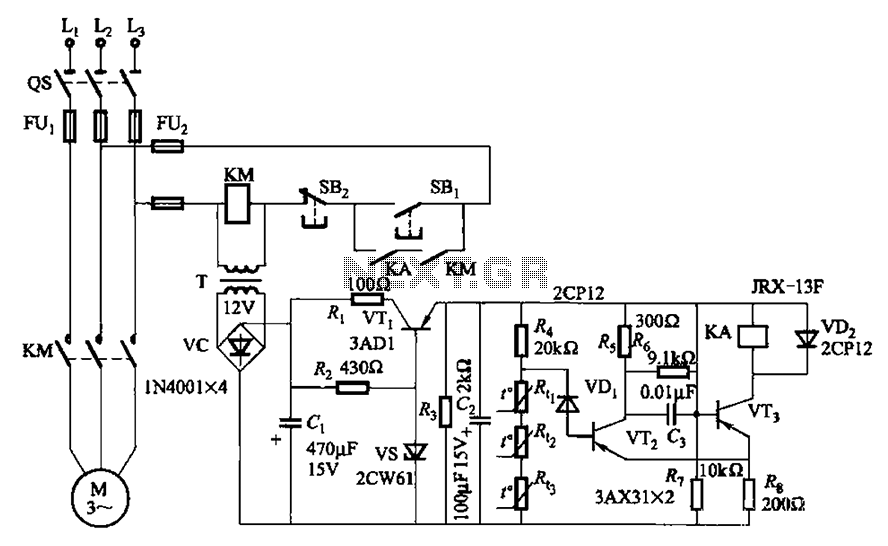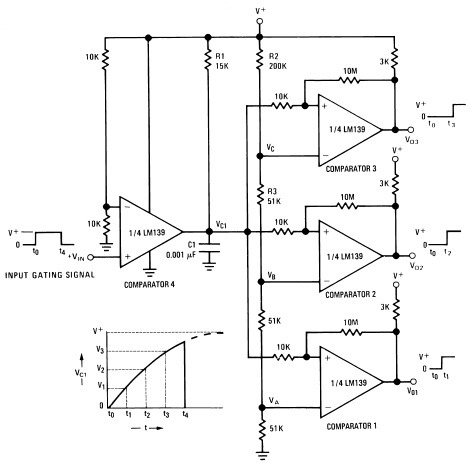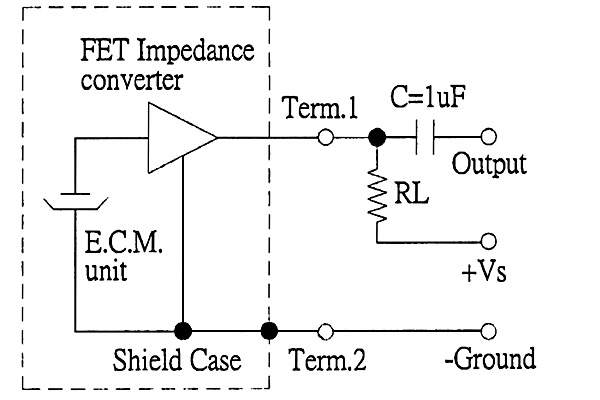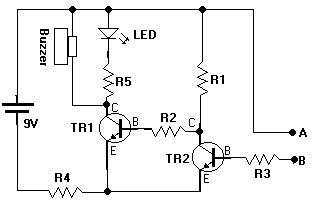
Delayed Pulse Generator Circuit
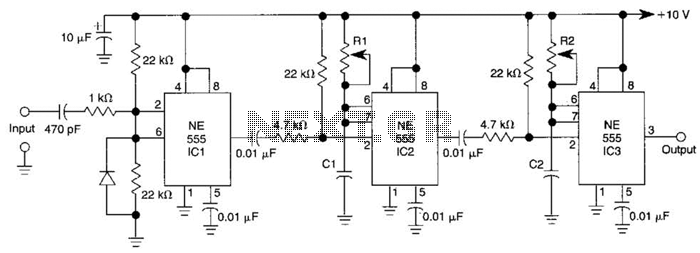
Three 555 IC timers are utilized in this circuit to create a simple delayed-pulse generator. IC1 functions as a waveform shaper to generate a rectangular waveform. IC2 generates a delaying pulse that triggers IC3 on the trailing edge of the delay pulse. Resistor R1 regulates the delay time, while resistor R2 adjusts the pulse width. A range of up to 10:1 can be achieved.
The circuit comprises three 555 timer integrated circuits (ICs) connected in a specific configuration to achieve a delayed-pulse generation function. The first IC, designated as IC1, is configured in an astable mode, serving as a waveform generator. It produces a stable rectangular waveform that serves as the basis for the subsequent operations of the circuit. The frequency and duty cycle of this waveform can be adjusted by varying the values of the resistors and capacitors connected to IC1.
IC2 is configured in a monostable mode, which allows it to generate a single output pulse in response to a trigger signal. The output pulse duration is determined by the resistor R1 and the capacitor connected to IC2. This configuration makes IC2 crucial for creating the desired delay before triggering the next stage of the circuit.
IC3, also configured in a monostable mode, receives a trigger from IC2 on the trailing edge of the pulse generated by IC2. The output pulse width from IC3 is controlled by resistor R2 and an appropriate capacitor. The combination of R1 and R2 allows for fine-tuning of both the delay time and the pulse width, enabling a significant range of operation, up to a 10:1 ratio.
The circuit's design allows for versatility in applications requiring delayed activation or timing sequences, making it suitable for various electronic projects. Proper selection of component values will ensure the desired performance characteristics are achieved, providing a reliable and adjustable delayed-pulse generator. Three 555 IC timers are used in this circuit to construct a simple delayed-pulse generator. IC1 acts as a waveform shaper to produce a rectangular waveform. IC2 produces a delaying pulse to trigger 103 on the trailing edge of the delaying pulse. Rl controls delay time and R2 controls pulse width. As much as a 10:1 range can be generated.
The circuit comprises three 555 timer integrated circuits (ICs) connected in a specific configuration to achieve a delayed-pulse generation function. The first IC, designated as IC1, is configured in an astable mode, serving as a waveform generator. It produces a stable rectangular waveform that serves as the basis for the subsequent operations of the circuit. The frequency and duty cycle of this waveform can be adjusted by varying the values of the resistors and capacitors connected to IC1.
IC2 is configured in a monostable mode, which allows it to generate a single output pulse in response to a trigger signal. The output pulse duration is determined by the resistor R1 and the capacitor connected to IC2. This configuration makes IC2 crucial for creating the desired delay before triggering the next stage of the circuit.
IC3, also configured in a monostable mode, receives a trigger from IC2 on the trailing edge of the pulse generated by IC2. The output pulse width from IC3 is controlled by resistor R2 and an appropriate capacitor. The combination of R1 and R2 allows for fine-tuning of both the delay time and the pulse width, enabling a significant range of operation, up to a 10:1 ratio.
The circuit's design allows for versatility in applications requiring delayed activation or timing sequences, making it suitable for various electronic projects. Proper selection of component values will ensure the desired performance characteristics are achieved, providing a reliable and adjustable delayed-pulse generator. Three 555 IC timers are used in this circuit to construct a simple delayed-pulse generator. IC1 acts as a waveform shaper to produce a rectangular waveform. IC2 produces a delaying pulse to trigger 103 on the trailing edge of the delaying pulse. Rl controls delay time and R2 controls pulse width. As much as a 10:1 range can be generated.
